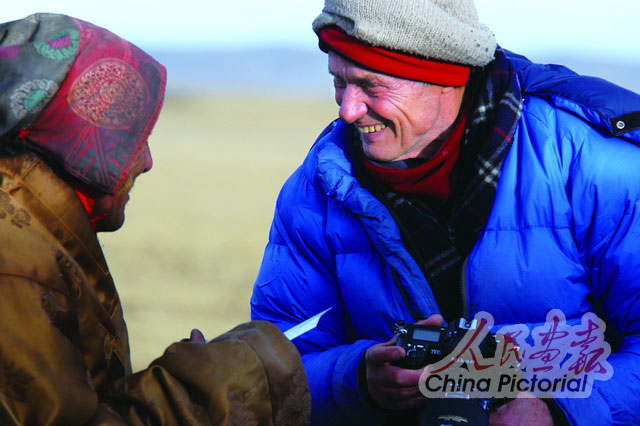|

|
| George Schaller with a local herder. by Kang Aili |
I was in Pujung's neighborhood in 2003 with coworkers from Peking University and the Tibet Forestry Bureau. Pujung had aged: His back was bent and he walked with a cane but his smile of greeting was just as wide. He now lived in a house, one of three he owned. A motorcycle and a truck were his transport instead of horses. No more treks by yak southward to trade wool, butter, and meat for barley to grind into tsampa. A dirt road reached his home. No more isolation from neighbors. "When I moved here," said Pujung, "mine was the only family. Now there are eleven. This is having an effect on the grassland." Households in the nearby Beico Xiang (Township), established in the 1970s, had increased from 90 to 137 and livestock from 45,000 to 79,000.
I have returned to the Chang Tang many times since my first visit in 1985, a total of 19 trips with the most recent one in 2007. The rapid changes in the standard of living of many households have astonished me. In addition to motorcycles, there are satellite dishes, solar panels, television, and even electric blenders to make a quick cup of butter tea.
In yet another policy change, most communal land was divided into parcels with every household being given its own rangeland to manage on a fifty-year lease. Pujung had in effect ceased to be a nomad to become a private rancher. I wondered if families would now overstock their pastures with livestock and degrade them, as happened so widely in the USA and Australia. I wondered, too, if Pujung would tolerate kiang and other wildlife eating the grass of his pastures. If drought or heavy snows caused his livestock to starve, could he move the animals elsewhere, as in the past?